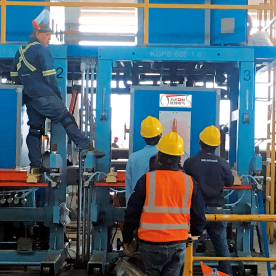[Automated pipe mill production line]Revolutionizing Manufacturing: How an Automated Pipe Mill Production Line is Shaping the Future of Industry
News 2024-6-10
Innovations in technology have significantly impacted various industries, with the manufacturing sector being one of the most directly affected. One of the groundbreaking advancements in manufacturing is the implementation of automated pipe mill production lines. These state-of-the-art systems are revolutionizing the way pipes are produced, offering numerous benefits such as increased productivity, improved precision, and enhanced safety.
Traditionally, pipe production has been a labor-intensive process that involves several manual steps. Workers were required to operate heavy machinery, handle materials, and perform repetitive tasks, all of which posed potential safety risks. Additionally, human error could lead to inconsistencies in the final product, which could result in costly rework and delays in production. However, with the introduction of automated pipe mill production lines, these challenges are being overcome.
One of the key advantages of automated pipe mill production lines is the significant increase in productivity. These systems are capable of running continuously, 24/7, with minimal human intervention. This means that production can be faster and more efficient, leading to higher output and shorter lead times. With automated systems, manufacturers can meet increased demand and keep up with market trends without compromising on quality.

Revolutionizing Manufacturing: How an Automated Pipe Mill Production Line is Shaping the Future of Industry
Safety is another important consideration when it comes to manufacturing, especially in industries where workers are exposed to hazardous materials and heavy machinery. Automated pipe mill production lines help mitigate these risks by reducing the need for manual labor. Workers are no longer required to perform physically demanding tasks or operate dangerous equipment, minimizing the likelihood of workplace accidents. By creating a safer working environment, manufacturers can protect their employees and prevent costly injuries and downtime.

Revolutionizing Manufacturing: How an Automated Pipe Mill Production Line is Shaping the Future of Industry

